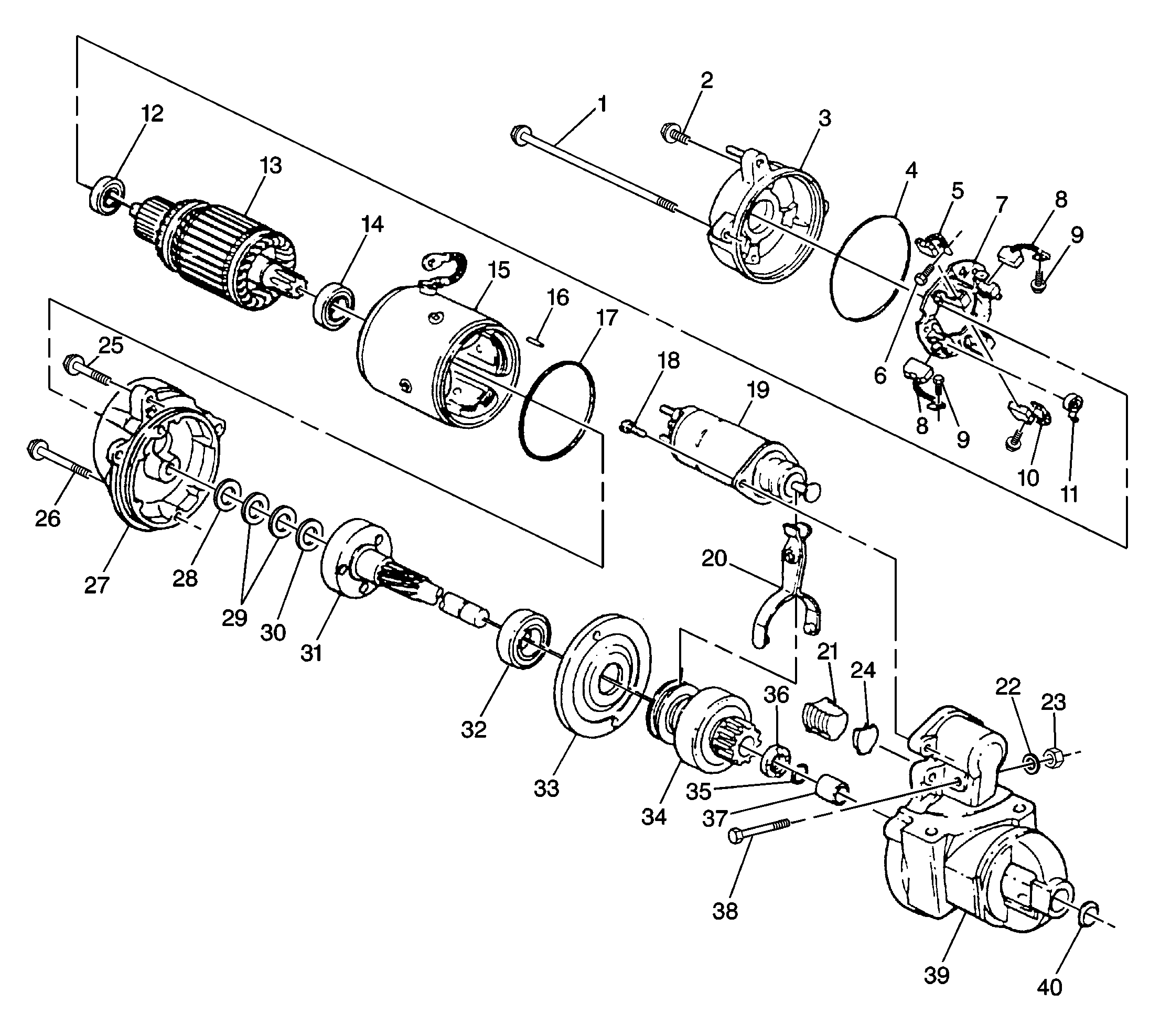Step
| Action
| Value(s)
| Yes
| No
|
1
| Was the Starting System Check performed?
| --
|
Go to Step 2
| Go to
Starting System Check
.
|
2
|
- Disconnect the engine shutoff solenoid connector (diesel), or
the ignition coil connector (gasoline).
- Connect a J 39200
from the battery positive (+) terminal to the battery negative (-)
terminal.
- Turn the ignition switch to the START position.
- Crank the engine for 15 seconds.
- Measure the voltage at the end of cranking.
- Diesel engine vehicles have 2 (two) batteries, both of the batteries
must be tested.
Notice: Never operate the starter motor for more than 30 seconds
at a time. Allow it to cool at least two minutes before cranking again. Excessive
cranking can cause overheating, which will cause serious damage to the starter
motor.
Does the voltage measure less than 9.6 volts?
| 9.6 V
|
Go to Step 3
|
Go to Step 4
|
3
|
- Do the battery load test(s). Refer to
Battery Not Operating Properly
.
- If the battery passes the load test, repair the starter motor.
Refer to

Is the repair complete?
| --
| System OK
| --
|
4
|
- Ensure that the battery terminals and the battery terminal bolts
are tight and are not corroded.
- Connect a J 39200
from the negative (-) battery terminal to the engine block.
- Turn the ignition switch to the START position.
- Observe the voltage while cranking the engine.
- Diesel engine vehicles have 2 (two) batteries, both of the batteries
must be tested.
Notice: Never operate the starter motor for more than 30 seconds
at a time. Allow it to cool at least two minutes before cranking again. Excessive
cranking can cause overheating, which will cause serious damage to the starter
motor.
Does the voltage measure more than 0.5 volts?
| 0.5 V
|
Go to Step 5
|
Go to Step 6
|
5
|
- Inspect the battery cable for a high resistance connection at
the engine block.
- If the connection is OK, replace the negative (-) battery cable.
Refer to
Battery Cable Replacement
.
Caution: Before servicing any electrical component, the ignition and start switch must be in the OFF or LOCK position and all electrical loads
must be OFF, unless instructed otherwise in these procedures. If a tool or equipment could easily come in contact with a live exposed electrical terminal, also disconnect the negative battery cable. Failure to follow these precautions may cause personal injury
and/or damage to the vehicle or its components.
Is the repair complete?
| --
| System OK
| --
|
6
|
- Connect a J 39200
from the positive (+) battery terminal to starter solenoid terminal
B.
- Turn the ignition switch to the START position.
- Observe the voltage while cranking.
- Diesel engine vehicles have 2 (two) batteries, both of the batteries
must be tested.
Notice: Never operate the starter motor for more than 30 seconds
at a time. Allow it to cool at least two minutes before cranking again. Excessive
cranking can cause overheating, which will cause serious damage to the starter
motor.
Does the voltage measure more than 0.5 volts?
| 0.5 V
|
Go to Step 7
|
Go to Step 8
|
7
| Inspect the battery cable for a high resistance connection at the starter
solenoid B terminal. If the connection is OK, replace the positive (+)
battery cable. Refer to
Battery Cable Replacement
.
Caution: Before servicing any electrical component, the ignition and start switch must be in the OFF or LOCK position and all electrical loads
must be OFF, unless instructed otherwise in these procedures. If a tool or equipment could easily come in contact with a live exposed electrical terminal, also disconnect the negative battery cable. Failure to follow these precautions may cause personal injury
and/or damage to the vehicle or its components.
Is the repair complete?
| --
| System OK
| --
|
8
| Replace the starter motor.
Refer to

Is the repair complete?
| --
| System OK
| --
|

